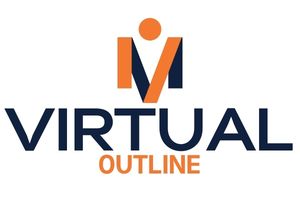Ethical Frameworks and Technological Innovations in Deepfake Video Generation
As technological advancements continue to reshape our digital landscape, the emergence of deepfake video generation technology has sparked both fascination and apprehension. This innovative tool harnesses the power of artificial intelligence to create highly realistic yet entirely fabricated videos. While the potential applications are vast and varied, from entertainment to education, ethical considerations loom large in its development and deployment.
At its core, deepfake video generator by leveraging sophisticated algorithms to manipulate facial expressions, voice patterns, and even entire scenes in videos. This capability presents exciting opportunities for filmmakers, advertisers, and educators alike. Filmmakers can resurrect actors from bygone eras or seamlessly integrate performers into scenes without the constraints of physical sets. Advertisers can craft hyper-personalized campaigns that resonate deeply with target audiences. Educators can create immersive learning experiences, bringing historical events and scientific concepts to life in unprecedented ways.
However, alongside these possibilities come ethical dilemmas that demand careful consideration. The foremost concern is the potential for deepfake technology to be used maliciously, such as spreading misinformation, defaming individuals, or manipulating public opinion. These risks underscore the importance of establishing robust ethical frameworks to guide the responsible development and application of deepfake technology.
Key principles within these frameworks include transparency, accountability, and consent. Transparency involves clearly disclosing the use of deepfake technology in any content creation. This empowers viewers to distinguish between authentic and manipulated videos, thereby preserving trust and integrity in media consumption. Accountability entails holding creators and distributors accountable for the ethical implications of their content, ensuring adherence to legal and ethical standards.
Moreover, obtaining informed consent from individuals whose likeness is used in deepfake videos is paramount. This ensures respect for privacy and prevents unauthorized use of personal data. Clear guidelines and regulations are essential to safeguarding against potential misuse and protecting individuals from harm.
From a technological perspective, ongoing advancements in AI and machine learning contribute to the refinement of deepfake algorithms. Enhanced realism, improved accuracy, and reduced processing times enable more sophisticated applications across diverse industries. However, with these advancements comes the responsibility to prioritize ethical considerations in tandem with technological progress.
Industry collaboration and interdisciplinary dialogue are pivotal in shaping ethical frameworks that evolve alongside deepfake technology. This involves engaging stakeholders from technology developers and legal experts to ethicists and policymakers. By fostering open dialogue and sharing best practices, the industry can collectively mitigate risks and maximize the positive impact of deepfake technology.
Looking forward, the integration of ethical frameworks into technological innovations is essential for fostering public trust and promoting responsible innovation. Initiatives such as AI ethics boards, industry standards, and regulatory oversight play crucial roles in guiding ethical practices and ensuring accountability within the burgeoning field of deepfake video generation.
In conclusion, while deepfake technology holds immense potential for innovation and creativity, its ethical implications necessitate a balanced and proactive approach. By embracing ethical frameworks that prioritize transparency, accountability, and consent, stakeholders can harness the benefits of deepfake technology while mitigating its inherent risks. Ultimately, fostering responsible innovation ensures that deepfake technology contributes positively to society, enhancing media production, education, and communication in a manner that respects individual rights and upholds ethical standards.







